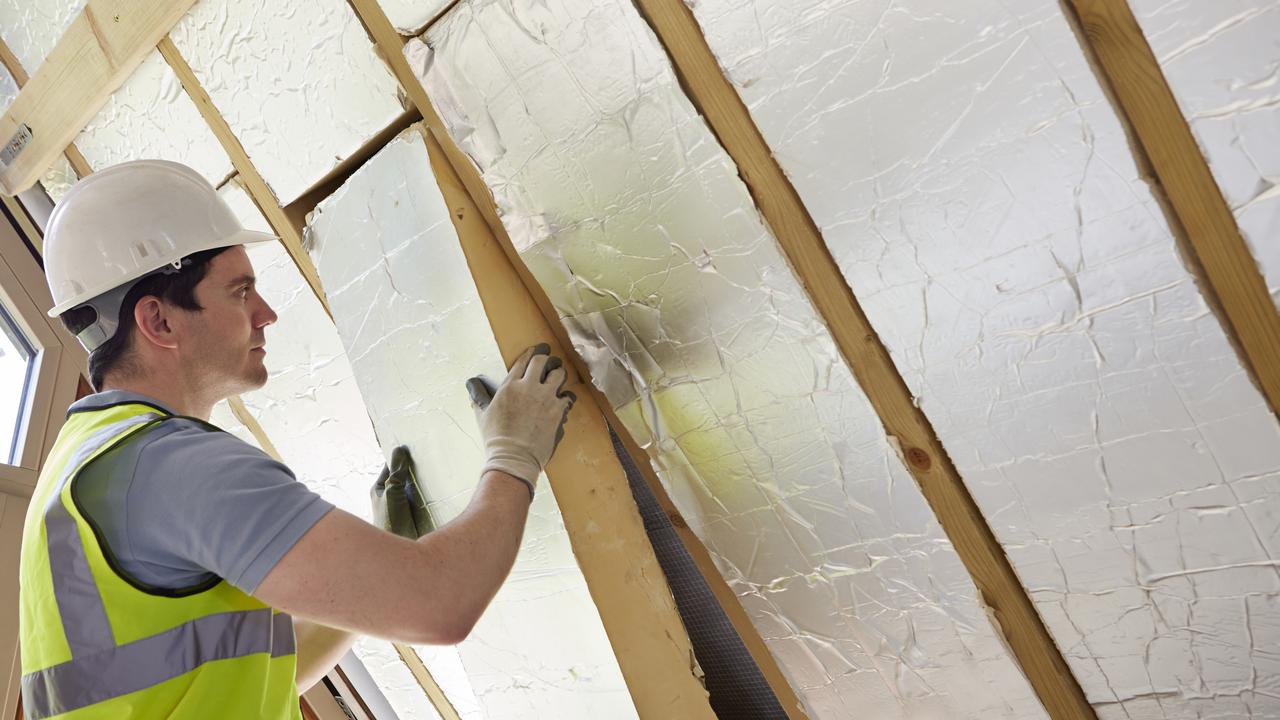Why Australian homes are colder than homes in other countries
If you’re having a hard time getting out of bed in the morning, you’re not alone! Australian homes are much colder in winter than homes in other countries – and experts say they know why

READING LEVEL: GREEN
Frosty temperatures over the past week have had us shivering in our homes.
While Australia has a much warmer climate than many countries across Europe, Asia and North America, our homes tend to feel colder in winter – and experts have revealed why.
Dr Nicola Willand of the RMIT University School of Property, Construction and Project Management said Aussie homes felt colder that other homes across the world because they were poorly built.
“That ‘chill in the morning’ is certainly a widely shared experience in Australia – but it shouldn’t be,” she said.
Dr Willand explained that homes in Australia often didn’t have insulation*, had cracks in the windows and doors that let cold air in and didn’t have very good heating systems.
Insulation is a bit like thermal underwear* for a house. By adding a layer of thick woolly batts* in the ceiling, it helps to keep the home warm by trapping heat within.
Australian homes also tended to be bigger than homes in colder countries, making them more difficult and expensive to heat, she added.

WHY IS IT BAD TO HAVE A COLD HOUSE?
Keeping warm is important in winter in order to prevent against cold and flu – which is also why you should always wear a singlet. Keeping your home warm is just as important, yet many people don’t realise all of the health risks that come from having a cold house, Dr Willand said.
Cold air in the home can lead to poor “respiratory* and heart health, infections and mould*,” Dr Willand said.
The high cost of electricity means many people can’t afford to keep their homes nice and toasty.
“Even though new homes are more energy efficient*, central heating in these large homes can be too expensive,” Dr Willand said.
“Restricting heating to one or two rooms is difficult, as heating control is limited, with many homes having a maximum of two zones to switch on (or) off.”

HEATING STANDARDS
Australian standards accept heating levels below what is set out by the rest of the world, Dr Willand said.
The Nationwide House Energy Rating Scheme (NatHERS), which decides the home energy star ratings* for new buildings, assumes living room heaters are switched off between midnight and 7am in Australia.
But little or no insulation means the warmth disappears quickly after heaters are switched off. As a result, many of us wake up to very cold living rooms in the morning.
NatHERS standards also assume Aussie bedrooms are heated to 15 degrees between midnight and 7am, which is lower than the 18 degrees recommended by the World Health Organisation (WHO) as being a good temperature for sleeping.
“(These) assumptions suggest that being cold at 7am, when most of us are getting ready for work and school, is acceptable,” Dr Willand said. “By contrast, energy efficiency ratings in other countries will assume heating in all rooms and at all hours of the day and night.”

RMIT Professor Ralph Horne said Australian building laws were much more relaxed than the stricter laws in place in the US and Europe.
Research done in 2005 found housing in parts of North America and Europe with a similar climate to Australia were 55 per cent more efficient* at heating and cooling compared to Aussie homes with the minimum standard* in place.
“The average energy efficiency (NatHERS) rating of all the overseas comparison homes was over seven stars*, and we have yet to implement* seven stars here in Australia almost 20 years later,” Professor Horne said.
“Across Australia, there has been a longstanding awareness of drought, water efficiency and extreme events such as floods and bushfires, but much less focus on energy efficiency in homes.”

Dr Trivess Moore, an expert in sustainable housing, said many Australian homes would benefit from being fixed up in order to help them stay warm in winter.
Dr Moore said sealing up cracks, improving insulation and installing double glazed* windows would help to trap heat in the home and keep Aussies warm during winter.
POLL
GLOSSARY
- insulation: a building material that slows the movement of heat from one area to another, usually put into roofs in order to help a house warm inside
- thermal underwear: singlets and long tights, aka “long johns”, made of warm material such as wool that you wear under clothes to keep you warm in very cold weather
- batts: thick sheets of insulation that look like fluffy mattresses and are installed in roofs
- respiratory: breathing
- mould: a type of fungi that grows in damp places and can cause health problems if inhaled
- energy efficient: using the smallest amount of energy possible to save on electricity cost and reduce environmental harm
- star ratings: a rating system that shows how energy efficient a home is between zero and 10 stars, with 10 stars being the most energy efficient
- efficient: working in a way that does not waste resources such as time, energy and money
- minimum standard: the least amount of energy efficiency allowed in a home. The Australian standard for new homes set by NatHERS is seven stars
- seven stars: the minimum standard of energy efficiency in Australia
- implement: put in place
- double glazed: windows with two layers of glass, which help to keep a home warmer
EXTRA READING
Cold sends shivers down our spines
Why some people never feel the cold
How cold was it in the coldest part of the Ice Age?
QUICK QUIZ
1. Why are Australian homes so cold?
2. What are two things we can do to make our homes warmer?
3. What temperature should we keep our bedrooms according to the World Health Organisation?
4. What are some health risks linked to living in a cold home?
5. How does insulation help to keep a home warm?
LISTEN TO THIS STORY
CLASSROOM ACTIVITIES
1. What is the solution?
There are a variety of actions that can be taken to help solve the problem of Australia’s cold homes. Some of these solutions will help individual households in the short term and other solutions will help on a larger scale over the long term. Create a table with two columns to list and categorise these solutions.
Time: allow 20 minutes to complete this activity
Curriculum Links: English; Sustainability
2. Extension
Sketch a picture of a home that has features designed to keep the home warm and also considers sustainability and cost.
Time: allow 15 minutes to complete this activity
Curriculum Links: English; Sustainability
VCOP ACTIVITY
Read this!
A headline on an article – or a title on your text – should capture the attention of the audience, telling them to read this now. So choosing the perfect words for a headline or title is very important.
Create three new headlines for the events that took place in this article. Remember, what you write and how you write it will set the pace for the whole text, so make sure it matches.
Read out your headlines to a partner and discuss what the article will be about based on the headline you created. Discuss the tone and mood you set in just your few, short words. Does it do the article justice? Will it capture the audience’s attention the way you hoped? Would you want to read more?
Consider how a headline or title is similar to using short, sharp sentences throughout your text. They can be just as important as complex ones. Go through the last text you wrote and highlight any short, sharp sentences that capture the audience.


